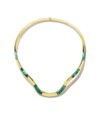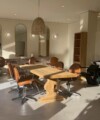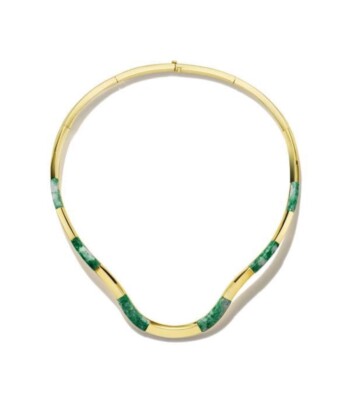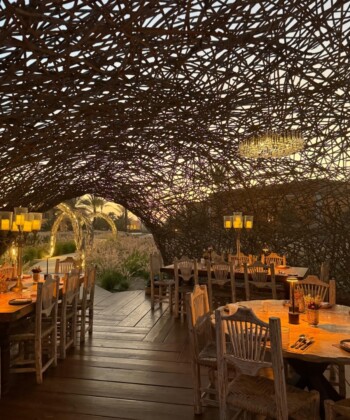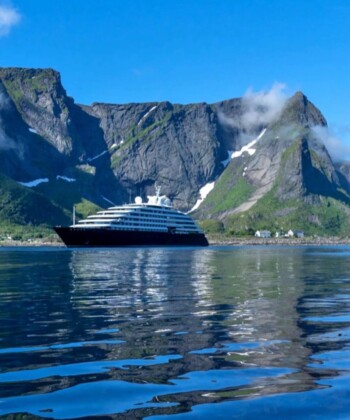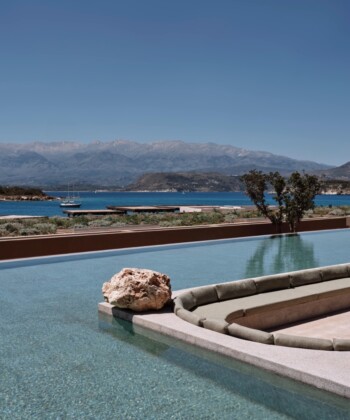Many people dream of visiting Japan, and for good reason. The land of the rising sun offers an ever-changing kaleidoscope experiences that make it simply unlike any place on earth. From ancient shrines steeped in history to neon-infused cities that seem straight from the future, there’s truly something for every type of traveler.
When most people finally commit to taking a trip to Japan, their plans typically follow the same formula: begin with a stint in Tokyo and conclude with a few nights in Kyoto before catching a return flight home. While those cities are undeniably worth exploring, the country is brimming with under-the-radar destinations just waiting to welcome curious guests. Hokkaido happens to be one of those places.
The mountainous island is actually Japan’s second largest (after Honshu), but only about five perfect of the country’s total population call Hokkaido home. The majority of the island is blanketed in untouched nature, but it’s punctuated with anchor cities that draw a diverse crowd of holiday-makers year-round. This balanced duality is exactly what makes it a dream for adventurous explorers, as well as those in search of a relaxing respite.
International visitors also appreciate that it’s generally less costly than Japan’s more frequented cities, and English-speakers can navigate the island with ease. Some of Hokkaido’s main draws include Sapporo (which just celebrated the 70th anniversary of the famed Sapporo Snow Festival); Niseko (renowned for its world-class skiing and snowboarding); and Otaru (teeming with tradition and authentic cultural experiences). Below, a comprehensive guide to some of Hokkaido’s must-see hot spots.

Hoikkado, Japan
Where to Stay:
Sapporo is the largest city on Hokkaido and offers accommodations suited to every interest and price point. For a lavish stay, book a suite at the JR Tower Hotel Nikko Sapporo, a top-rated property perched above Sapporo Station and just 30 minutes from the New Chitose Airport. The four-star Hotel Gracery Sapporo is another popular option thanks to convenient location and accessible room rates. In Niseko, it’s all about the snow sports. There are four main interconnected ski resorts to choose from: Grand Hirafu, Hanazono, Niseko Village, and An’nupuri. But there is a luxurious lineup of hospitality brands set to open their doors in the near future including a Park Hyatt Niseko, Hanazono (launching in December 2019) and a new Ritz-Carlton Reserve (slated to debut in 2020). Smaller boutique hotels and traditional ryokans are also sprinkled throughout the region, such as Zaborin Ryokan (consisting of 15 private villas) and Kimamaya by Odin (a micro-boutique hotel with nine cozy rooms).
Where to Eat:
Hokkaido is a true epicurean destination known for serving an array of regional specialties. Thanks to its proximity to the Sea of Japan and Pacific Ocean, seafood is a classic staple available all year long. The Sankaku Fish Market in Otaru offers everything under the sea, from fresh fish filets to live king crabs and oysters by the bushel. Pop into Otaru Takeda to taste local delicacies like hokke fish (Atka mackerel), or order one of their delectable donburi bowls piled high with uni, sashimi, and bright orange roe spheres.
For dessert, stop by LeTAO for a slice of their famous cheesecake paired with a cup of matcha tea. The Hokkaido region is also famous for their ramen—a perfect dish in the colder months. For some of the tastiest ramen in Sapporo, grab a seat at Shirakaba Sanso in Sapporo Ramen Kyowakoku. Soup curry is another Hokkaido specialty, inspired by traditional Chinese medicinal soups. But for the best bowl, pay a visit to Ajanta—the first restaurant to serve the beloved dish back in the 1970s. For meat lovers, don’t leave Hokkaido without sampling jingisukan, or “Genghis Khan” (a popular dish made with grilled lamb or mutton and vegetables) or Wagyu raised on the island’s vast open plains.
What to Do:
Much to the delight of skiers and snowboarders, winter is Hokkaido’s longest season. After a day spent on the slopes, recuperate in one of Niseko’s numerous onsen (Japanese hot springs). They are full of restorative minerals and nutrients, and the tradition of soaking in their supposed healing waters dates back centuries (just be sure to brush up on proper onsen etiquette from the Japan National Tourism Organization before taking a dip).

Japanese hot springs in Niseko
For less active vacationers, make time to explore Lake Tōya during peak skiing hours. Guides at Lake Tōya Ranch lead group or private tours by horseback all year long that provide unforgettable vistas of the shimmering lake and the surrounding volcanic mountains. If making a day trip to Otaru, be sure to visit the Otaru Orgel-do II; a former furniture store turned music box museum. In addition to the Sapporo Snow Festival, the city also hosts a series of cultural events throughout the year, including the Sapporo Lilac Festival in the spring and the Sapporo Autumn Fest, which attracted more than one million gourmands every fall. While in town, a visit to the Sapporo Brewery and the accompanying beer museum, where tourists can tour the facility and sip on Sapporo Classic, an exclusive variety only sold in Hokkaido.

Sapporo Museum


